Embracing Cloud Technology To Improve Workplace Health and Safety In The Manufacturing Sector
.jpg/fit-in/1200x9999/filters:no_upscale())
Written by Skytrust in collaboration with our PR agency
The new Australian Work Health and Safety Strategy has identified manufacturing as one of the priority sectors for safety management, as workers are exposed to major health and safety risks in the line of work. According to Safework Australia, 11% of all workplace fatalities recorded in 2021 occurred in the manufacturing sector.

Mary Nizamis
“Manufacturers are generally aware that they must comply with the applicable workplace safety legislation, to ensure their employees are safe at work. However, not having adequate safety management systems in place can impact a business,” explains Mary Nizamis, Chief Relations and Governance Officer at Skytrust, a cloud-based safety and compliance software system providing users with a holistic approach to safety compliance. “Cloud-based health and safety software resolves these issues fast, putting the employer and employees firmly in control of workplace safety.”
Unpacking the benefits of Skytrust as a cloud-based software solution
-
Quick and easy implementation: Unlike traditional software packages, cloud-based software solutions don’t rely on the download or installation of IT infrastructure. “The Skytrust software, for example, can be configured and operational within 48 hours,” says Mary.
-
Cost-effective, flexible packages: A monthly subscription enables a cost-effective package that also provides ongoing enhancements to the platform at no cost to the client.
-
Easy access: Employees can easily access the software, at any time, through smartphones, laptops and other devices. An App also offers the ability to report incidents, hazards, and conduct inspections even when offline.
Software enhancements: As part of the package, continual enhancements ensure the business is always utilising the latest version of the software, without the time (and additional IT costs) associated with purchasing updates.
Collaboration and data sharing: Cloud-based software enables employees to edit and share data collaboratively, in real-time. It also ensures data consistency, resulting in fewer errors. “This makes teams more productive, especially in environments or industries involving remote work,” elaborates Mary.
Data and reporting: Cloud-based software can collect and collate business data which, in turn, can be used to enhance business operations and performance. “The Skytrust reporting features allow you to track and measure the effectiveness of your WHS management systems and gain a global overview of how the business is performing,” says Mary.
Security: Cloud-based software requires dedicated strict security protocols to be put in place by the provider, to reduce the risk of data being compromised. “Similarly, the data recovery and backup functionality of the cloud prevents data losses and downtime,” adds Mary.
“Cloud-based workplace safety software allows risk controls to be implemented company-wide, and these controls to be constantly reviewed and monitored as required. The safety manager can evaluate whether current safety management systems are effective in mitigating risks,” explains Mary. She points to Skytrust’s work health and safety software, which enables management and staff to track, monitor and record incidents online with quick and easy access via smartphone or tablet, using QR codes.
Her advice when considering safety management software is to choose a solution that’s easy to use, offers easy-to-understand dashboards with real-time data, and with the functionality to manage everything from training to machinery licences and employee information in one place. “The implementation of new technology solutions can be daunting but, with careful planning, it’s easier to get the whole team on board,” she adds.
Laying the foundations for technology adoption
Mary reiterates that a company’s technology adoption plan shouldn’t be any different to other strategic business plans. Follow the standard principles of strategic planning:
1. Set your vision: Collaborate with key personnel to outline shared long-term goals. This helps get all stakeholders on board and can avoid potential barriers.
2. Build your plan: Everyone in the business needs to be aware that digital transformation will initially have various implications for different personnel when moving from existing systems. Good communication is essential in managing expectations.
3. Involve your IT department: Moving to cloud-based technologies sometimes relies on the input of your IT team to efficiently manage the transition. To reduce any challenges or barriers with the process, get your IT team involved from the start for a smoother transition.
4. Develop a business case: Evaluating your return on investment will help create a clear business case and rally stakeholder support. Businesses that have whole team support and customer understanding, experience positive outcomes from their digital transformations.
5. Get into the Cloud: Online software services are the next logical step for any business. This is because they not only enable remote use, but also provide many benefits around efficiencies, productivity, and reduced IT operating costs through not having to manage your own servers or maintain systems. “Your provider should ensure that all your cybersecurity requirements are met and there is also the added benefit of reducing your carbon footprint,” adds Mary.
Learn more about the Workplace Health and Safety Show
The Workplace Health & Safety Show is Australia's largest free-to-attend exhibition and conference dedicated to health and safety. Packed full of exhibits, live demos, seminars, workshops, networking - and attended by thousands of health and safety professionals - this all-encompassing event provides the knowledge, tools, resources and connections you need to strengthen your safety culture and improve performance and engagement.
Supported by the Australian Institute of Health & Safety, the event attracts thousands of professionals responsible for occupational health and safety and workforce wellbeing at Australia’s largest companies and worksites, including safety, health and environmental buyers and end-users to safety resellers and retailers, senior executives and HSE professionals, people and culture professionals, contractors as well as safety managers and supervisors.
When and where:
- Wednesday 22 – Thursday 23 May 2024 Melbourne, Melbourne Convention & Exhibition Centre
- Wednesday 23 - Thursday 24 October 2024, Sydney Showground, Olympic Park
Interested professionals can view the Workplace Health and Safety Show program and complete their free registration here.


